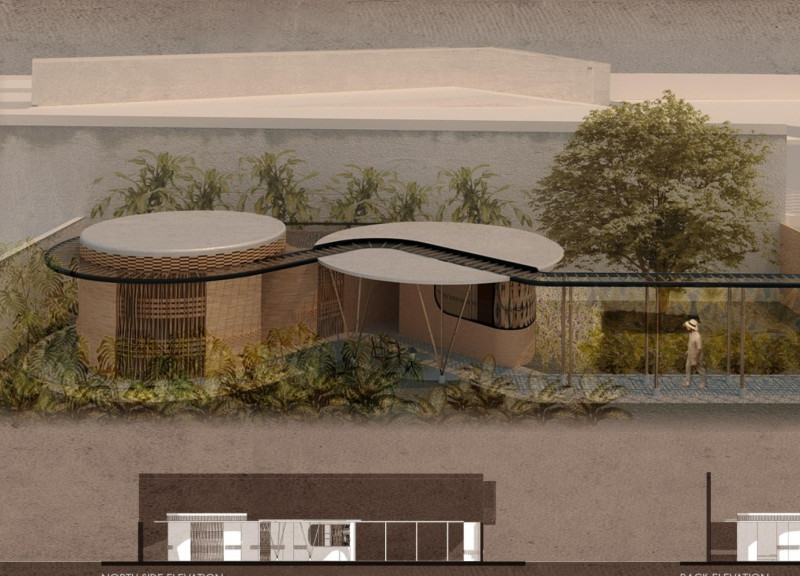5 key facts about this project
8 House is located in the historic center of Cartagena, Colombia, designed with a focus on including people who are visually impaired. The goal is to create a living space that is functional and pleasant for everyone, whether they are residents or visitors. The design combines modern architectural ideas with the character of the area's colonial buildings and lush surroundings.
Design Concept and Spatial Flow
The concept revolves around creating different environments within the house, where each space offers a unique sensory experience. The design intentionally manipulates elements like temperature, ventilation, and sound, which improve the overall quality of living. Circulation is a key consideration; curved walls are used to eliminate sharp corners. This creates a smooth path that helps with navigation. The flow of the space is meant to guide all users easily from one area to another.
Tactile Elements and Navigation
Inside, 8 House features various tactile cues that assist residents in finding their way. Different textures on the walls and floors provide important sensory information, making it easier for individuals to understand their surroundings. These changes in texture convey a sense of place and guide movement. The inclusion of these elements is essential in creating a supportive environment, blending practicality with thoughtful design.
Materiality and Environmental Considerations
The design uses traditional brick masonry, a common feature in Colombian buildings, allowing for flexibility in how form and space are arranged. Guadua, a type of bamboo found locally, is also part of the construction strategy. It is known for its strength and is used to create structures that promote natural airflow. These material choices not only fit within the local architectural style but also enhance the house's overall environmental performance.
Interconnection with Nature
8 House takes advantage of the rich landscape of native tropical plants surrounding it. The design encourages a connection between indoor and outdoor spaces, allowing nature to come into the living areas. This relationship creates a comfortable atmosphere and enhances life quality. The architectural approach fully appreciates its environment, providing both an inviting feel and a functional setting within the urban landscape.



















































